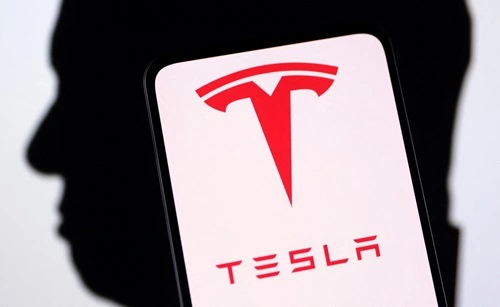Tesla, Inc., founded in 2003, has transformed the global automotive and energy industries with its innovative electric vehicles (EVs) and sustainable energy solutions. Led by CEO Elon Musk, Tesla’s journey from a niche EV maker to a global powerhouse has been nothing short of remarkable. With cutting-edge technology, a visionary leadership approach, and a strong brand, Tesla has secured a unique position in the global market. This article presents an in-depth SWOT (Strengths, Weaknesses, Opportunities, Threats) analysis of Tesla, evaluating its current market scenario and potential future outlook.

Strengths
1. Pioneering Position in Electric Vehicles:
Tesla holds a pioneering position in the EV industry, with an early-mover advantage that has helped it secure a loyal customer base. Models like the Tesla Model S, Model 3, and Model X have set benchmarks for performance, safety, and range, making Tesla a leader in both quality and innovation. With advanced battery technology and an industry-leading range, Tesla continues to dominate the EV market.
2. Strong Brand Recognition and Customer Loyalty:
Tesla’s brand stands for innovation, sustainability, and high-performance vehicles. Its unique marketing strategy, often led by Elon Musk’s high-profile public presence, has cultivated a loyal following. Tesla owners are not just customers; they are brand advocates, thanks to Tesla’s strong focus on customer experience, which includes direct-to-consumer sales and an exceptional Supercharger network.
3. Vertical Integration and Control Over Supply Chain:
Tesla has adopted a vertically integrated model, from designing and manufacturing its battery cells at the Gigafactories to directly selling vehicles through company-owned stores. This integration allows Tesla to control costs, maintain quality standards, and secure a steady supply of critical components like batteries. Tesla’s Gigafactories, spread across the U.S., Europe, and Asia, are also key in ensuring scalability and cost control.
4. Market Leader in Battery Technology and Energy Solutions:
Tesla’s innovation extends beyond EVs to energy solutions, including solar products and battery storage. The company’s Powerwall and Megapack products have revolutionized energy storage for residential and commercial use, positioning Tesla as a major player in the renewable energy sector. This diversification adds additional revenue streams, solidifying Tesla’s leadership in sustainable solutions.
Weaknesses
1. High Product Prices and Limited Accessibility:
While Tesla has revolutionized the EV industry, its vehicles remain expensive compared to traditional internal combustion engine (ICE) vehicles. Despite the launch of the more affordable Model 3, Tesla’s EVs are out of reach for a significant portion of consumers, particularly in emerging markets. As affordability becomes crucial for expanding the EV market, Tesla’s high price point limits its accessibility.
2. Quality and Production Challenges:
Tesla has faced recurring issues with quality control, including complaints about fit and finish, paint quality, and battery issues. Although these issues have improved over time, they have impacted Tesla’s reputation for quality. Additionally, the company has encountered bottlenecks in scaling up production to meet demand, leading to delivery delays and backlogs.
3. Heavy Dependence on the U.S. Market:
Although Tesla is a global brand, a substantial portion of its revenue comes from the U.S. market. This reliance exposes Tesla to risks associated with U.S. market fluctuations and policy changes. To reduce this dependency, Tesla has been expanding its footprint in China and Europe, but achieving a more balanced geographical revenue mix will require continued effort.
4. Reliance on Elon Musk’s Visionary Leadership:
Tesla’s success is closely tied to Elon Musk’s vision and leadership. While Musk’s role has been instrumental, this reliance poses a risk if he were to step down or face legal or regulatory challenges. Investors and stakeholders have often expressed concerns about Musk’s unpredictable approach, which can lead to stock volatility.
Opportunities
1. Expanding EV Market and Government Incentives:
The global transition to cleaner energy and lower emissions has fueled unprecedented growth in the EV market. Governments worldwide are implementing incentives, tax breaks, and stricter emission standards, which favor EV adoption. Tesla stands to benefit significantly from these incentives as it expands its product lineup and targets new markets, particularly in Europe and Asia, where EV adoption is surging.
2. Diversification into Autonomous Driving and AI Technology:
Tesla has been actively developing autonomous driving technology, positioning itself as a leader in self-driving capabilities. Its Full Self-Driving (FSD) software has already set new standards in the industry, although regulatory approval remains pending. As autonomous vehicles become more widely accepted, Tesla has the potential to leverage this technology to create new revenue streams, including ride-sharing services and licensing FSD technology to other automakers.
3. Expansion into Renewable Energy Solutions:
Beyond automotive, Tesla has been investing in renewable energy, with products like solar panels, solar roofs, and energy storage solutions. The global shift toward renewable energy offers Tesla a lucrative market in which to expand its energy segment. With Tesla’s battery expertise, the Powerwall and Megapack solutions could see growing adoption, offering energy independence to homes, businesses, and even governments.
4. Increased Production Capacity with New Gigafactories:
Tesla’s Gigafactories have revolutionized automotive manufacturing by producing vehicles and batteries under one roof. Tesla’s new factories in Berlin, Shanghai, and Texas increase its production capacity, allowing it to meet rising global demand. These factories are expected to enable cost savings through economies of scale, improving Tesla’s profitability while also making its products more affordable.
Threats
1. Growing Competition in the EV Market:
The EV market is witnessing rapid entry of traditional automakers like Volkswagen, Ford, and General Motors, as well as new players like Rivian, Lucid, and BYD. These competitors are investing heavily in EVs and autonomous driving technology, challenging Tesla’s market share. Tesla will need to maintain its technological edge to avoid losing ground to these increasingly formidable rivals.
2. Regulatory and Policy Risks:
Tesla operates in highly regulated industries, from automotive safety to environmental standards. Changes in government policies, such as reduced subsidies for EVs or tightened regulations on self-driving cars, could negatively impact Tesla’s sales and operations. Additionally, Tesla’s global expansion is subject to varying regulatory frameworks, which could pose challenges to scaling production and selling vehicles in different regions.
3. Rising Material and Supply Chain Costs:
The global semiconductor shortage and rising prices of raw materials like lithium, cobalt, and nickel pose significant risks to Tesla. These materials are critical to battery production, and any supply chain disruptions can affect production timelines and increase costs. Although Tesla has secured supply agreements and invested in raw material processing, rising costs and supply chain issues remain concerns.
4. Economic Downturns and Interest Rates:
Global economic fluctuations, including inflation and rising interest rates, can impact consumer purchasing power, making EVs less affordable for many. Additionally, Tesla’s reliance on financing for its vehicles makes higher interest rates a potential deterrent for buyers. In the event of an economic downturn, discretionary spending on vehicles, especially premium EVs, could decline, impacting Tesla’s sales.
Future Outlook
The future outlook for Tesla is both exciting and challenging. As a frontrunner in the EV and renewable energy sectors, Tesla has numerous growth opportunities, particularly as EV adoption increases globally. Tesla’s focus on self-driving technology, combined with its strong R&D investments, positions it well in the autonomous driving market. If Tesla achieves regulatory approval for its Full Self-Driving technology, it could unlock significant revenue streams in ride-sharing and technology licensing.
In terms of geographical expansion, Tesla’s push into China and Europe has been promising, but increased competition in these regions means that Tesla will need to continually innovate and adapt to local preferences. To maintain its leadership position, Tesla must also address its quality control issues and continue to optimize its production processes.
Tesla’s ability to navigate supply chain challenges, increase affordability, and make EVs more accessible will be critical to its future success. Furthermore, Tesla’s investments in energy solutions may allow it to capitalize on the growing demand for sustainable energy, diversifying its revenue streams and creating a resilient business model that goes beyond automotive.
In conclusion, Tesla’s strengths in innovation, brand power, and technology provide a solid foundation, but the company must address its weaknesses and be prepared to tackle regulatory, competitive, and economic threats. By doing so, Tesla can continue its journey as a market leader and pioneer in the EV and renewable energy industries, pushing the world toward a sustainable future.

